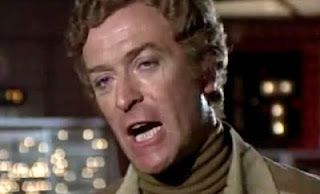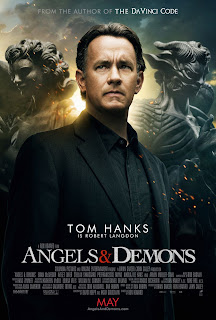
If The Dirty Dozen and Cocoon had ever had a drunken one-night stand, this is what the baby would have looked like.
The Expendables 2 (2012) is such a bizarre mash-up of styles and demographics – oh-my-aching-sides oldie gags and uber-violence – that it frequently leaves the viewer perplexed: “Aw, look at all the old people, still so sprightly and full of zest. Wait no, what’s he doing? Oh god no, he just shot somebody in the face!”
Following the respectable box office of The Expendables (which proved the adage: it’s never too late to put old dogs through exactly the same tricks), old stroke-features Stallone here rounds up the boys again.
Eschewing a state pension, the 66-year-old has gathered Schwarzeneger (65), Willis (57), Lundgren (55), Van Damme (52) and junior partner the Stath for another medley of tongue-in-cheek heroics and stomach-churning blood spillage.
(To fully appreciate just how downright weird all this is, just consider that cameo assassin Chuck Norris, at a coffin-brushing 72-years-old, is a full 20 years older than Cocoon actor Wilford Brimley was when he starred as a pensioner in that film.)
The ‘plot’, in which the team rescues some plutonium, blasts the baddies and saves the obligatory village, is so by-the-numbers we need not go into detail here. What really impresses is the gusto with which the screenplay (co-written by Sly) embraces every possible action movie cliché.
What, the team has to do an impossible mission or GO TO JAIL? You mean, the young buck who’s doing ‘one last job’ to raise enough money to marry his sweetheart ACTUALLY DIES? You’re kidding me: the glamorous female who’s foisted on the reluctant team turns out to be so kick ass and gutsy she eventually WINS THEIR RESPECT?
It sounds awful, but it actually works. The whole movie is essentially one gigantic wink to the audience, a cinematic karaoke of old action movie favourites. This can become wearing when the action pensioners repeatedly blurt out self-reverential soundbites (‘I’m back’, ‘Yippee-ki-yay’ etc) but it’s mostly cartoonish good fun.
In fact, the film only really falters when it tries to up the drama and get serious. Chief villain Jean Claude Van Damme’s opening soliloquy – a rambling, four-minute homily to ‘respect’ – is literally incomprehensible, and there’s a palpable sense of relief when he finally shuts up and kung-fu kicks a dagger into someone’s chest. (Yes, he really does.)
Despite all the guns, bombs and crashing planes, the most fascinating view on display – especially on the big screen – is the cast themselves. Stallone, arrested several years ago for smuggling his personal supply of human growth hormone into Australia, scarcely even looks human anymore.
He alternately wears a thick, black woollen beret and his own hair, but you’d be hard pressed to tell the difference. The bulging veins on his forearms are just terrifying, and those HGH injections haven’t quite reached down to his legs, which are now comically old man skinny. It’s like there’s two different bodies waddling across the screen – Tom Hardy on top and Steptoe at the bottom.
Arnie, meanwhile, looks like a semi-melted waxwork of his younger self, his face tight and surgical-shiny in places, but hanging off his jowls at the sides. Van Damme wears sunglasses for 95 per cent of the time – even while underground – presumably because there are bags under his eyes you could carry your shopping in.
Of the others, Bruce Willis merely looks even more like a smug testicle, while septuagenarian Chuck Norris – with his magnificently white teeth and lustrous brown beard/hairdo combo looks like a human beaver. It’s like he’s accidentally strayed into the action from an Island of Dr Moreau set next door.
At a sprightly 45-years-old, it’s left exclusively to the Stath to provide all the actual action in this action movie. Director Simon West shows a good sense of the ridiculous for the most part with this movie (he made Con Air, after all), but his choreography of the fight scenes is lamentable. The clunky edits make abundantly clear that the baddies are obediently queuing to get biffed one at a time; I’ve seen queues in Lidl’s with more sense of danger.
Still, that’s a minor gripe about a largely entertaining yarn which, in its eagerness to please, throws us an exploding helicopter in the very first scene. Our crew, armed with all kinds of armoured vehicles, bust into a walled compound to rescue Arnie.
Before you can say human growth hormone injections, Sly’s somehow on a low rooftop with his tanky vehicle, which has a motorbike strapped to the back. A chopper swings low, ready to fire, so Sly revs up the bike and sends it blasting into the helicopter cockpit, causing an inevitable crash and, yes, explosion.
Exploding helicopter innovation
The driving-a-moving-automobile-into-a-chopper gambit has been used before (Willis in Die Hard 4 provides a worthy demonstration of the form) but the good thing about this example is that it doesn’t make a meal out of things. There’s no Michael Bay multiple-cut, slo-mo, shite CGI business going on: it just happens. One minute Sly’s shooting someone repeatedly in the chest, then he throws a motorbike at a helicopter, then he punches someone else to death. Simple.
Positives
I love how, with each movie, less and less of what Sly says is comprehensible, especially when he’s angry. There’s a whole scene where he castigates Bruce Willis down a walkie talkie that I didn’t catch a word of.
You can picture the director asking him to go through it seven times before just throwing his hands into the air. In the latest Batman film, Tom Hardy often can’t be understood because he’s wearing a big mask: Sly now achieves much the same effect with just the burden of his own slopey mouth.
Negatives
The gutsy woman character is – probably deliberately – neither that young nor that glamorous, presumably to avoid providing too sharp a contrast with her doddering co-stars. However, she is one cack actress. When you’re in a scene with Sly where he’s stutteringly growling out some half-baked ‘backstory’ and YOU’RE the one whose acting is noticeably bad, it’s time to start worrying.
Favourite quote
Van Damme’s colossally nonsensical: “Without respect, we are just people.” What?
Interesting fact
The collective age of the main cast a very high figure indeed that would have impressed you if I could have been bothered to work it out.
Review by: Chopper




























































